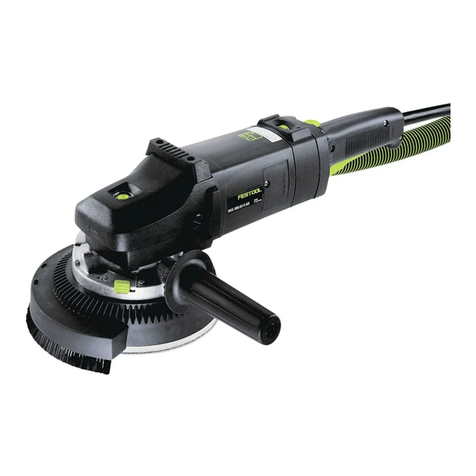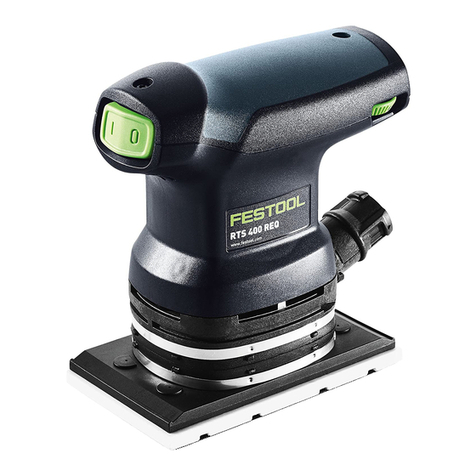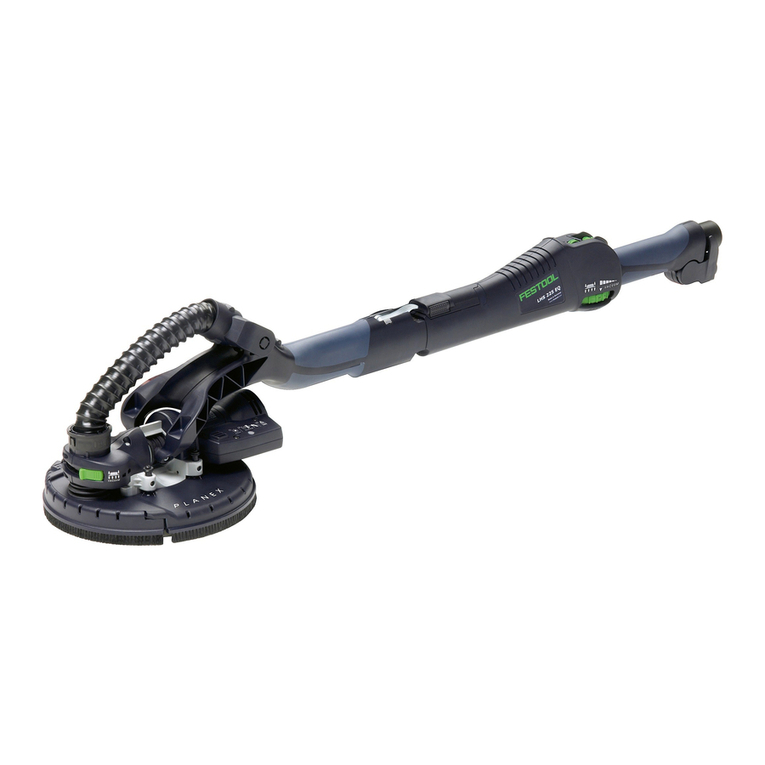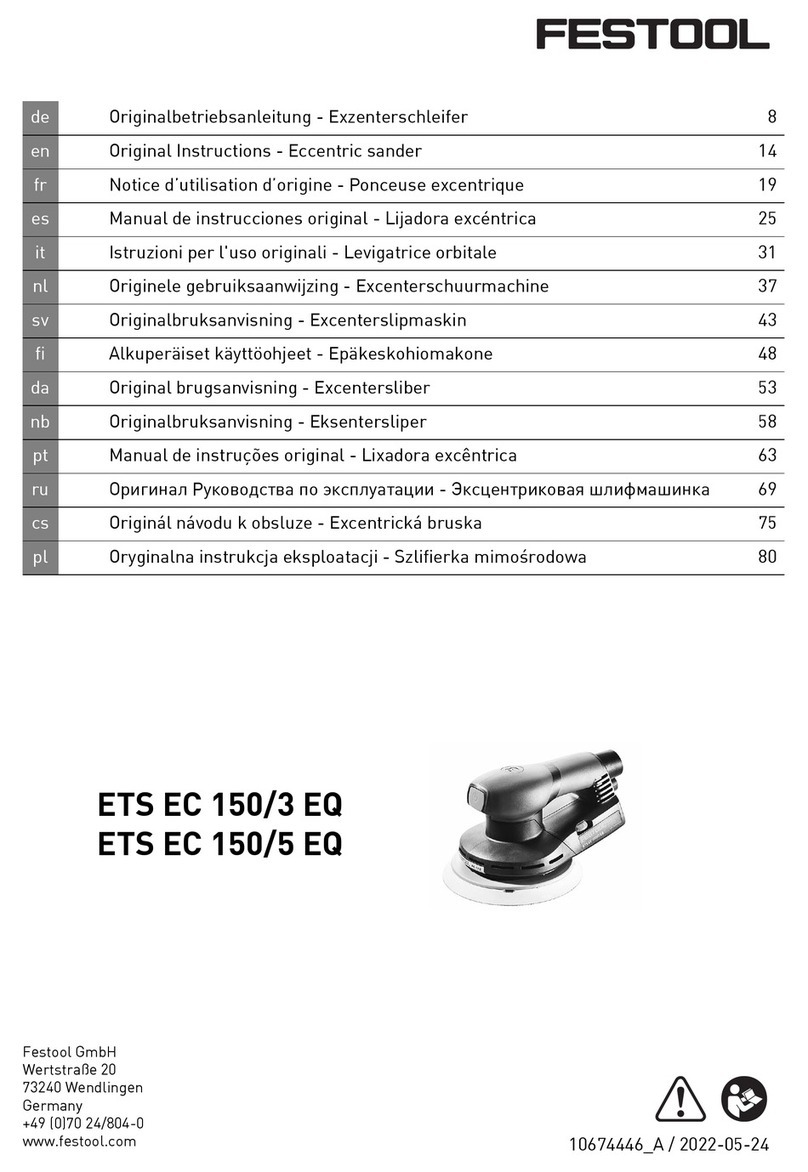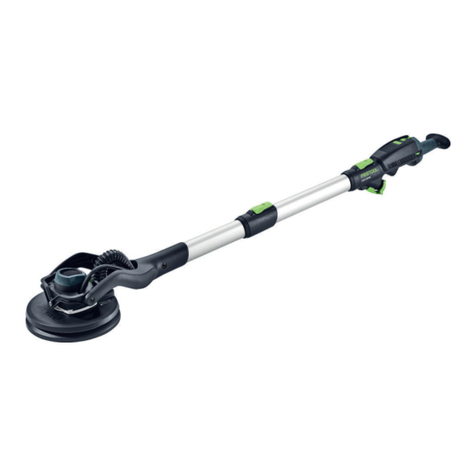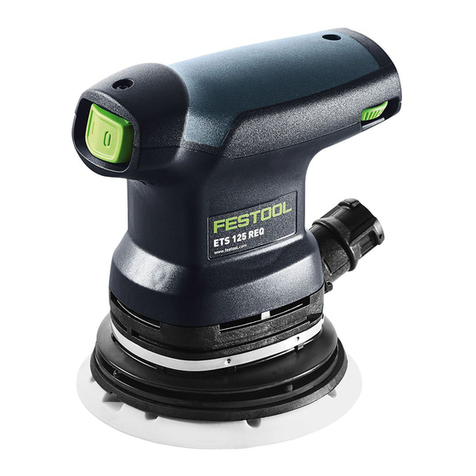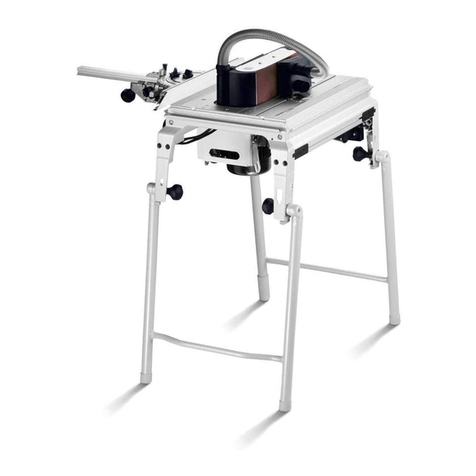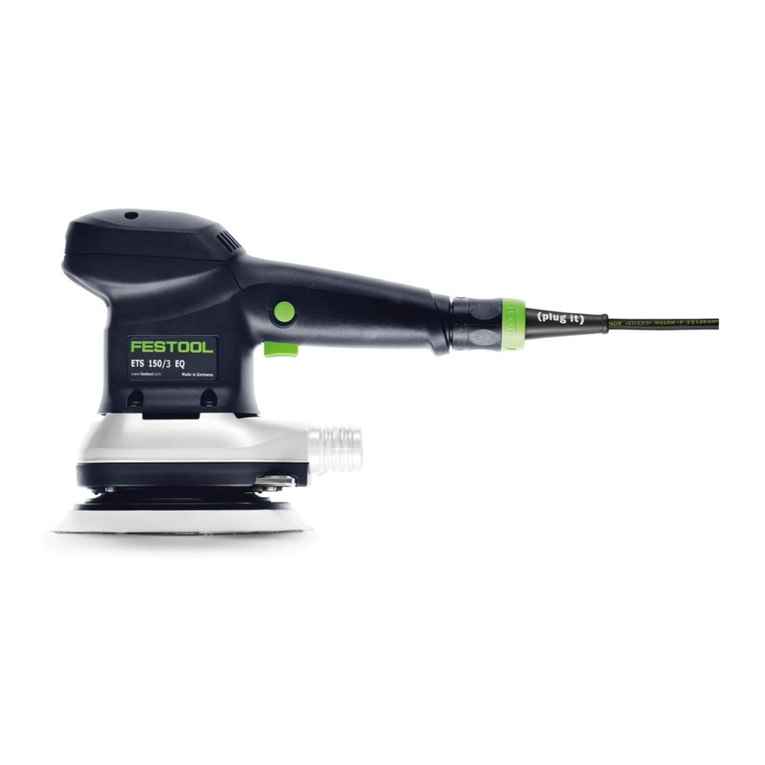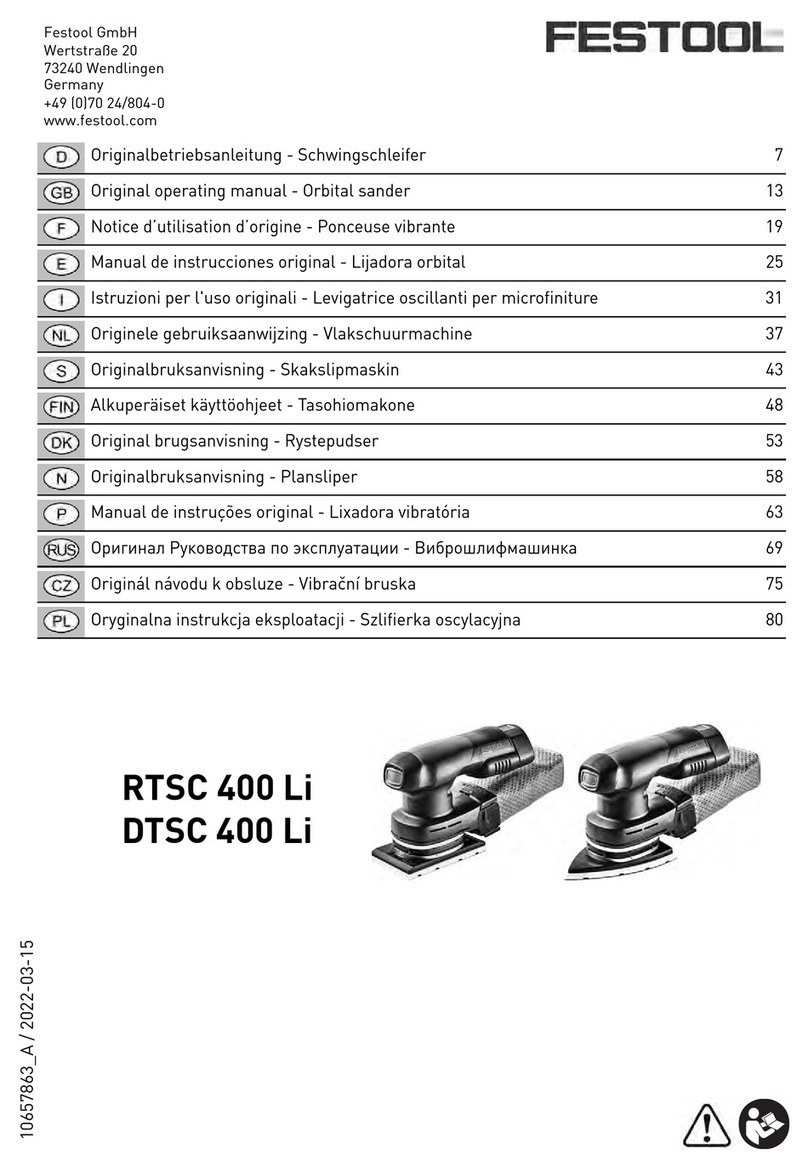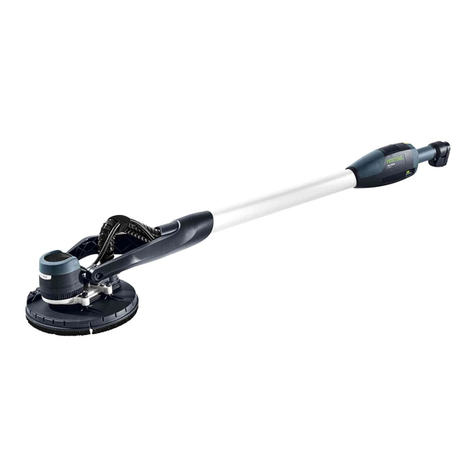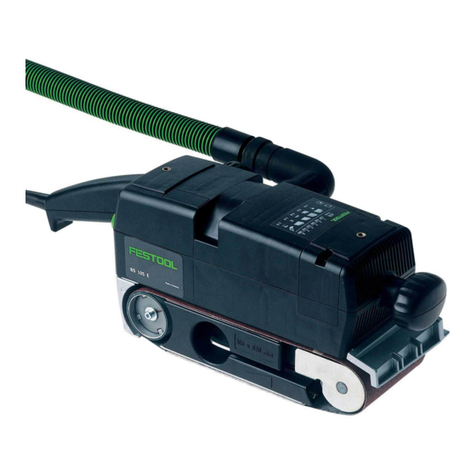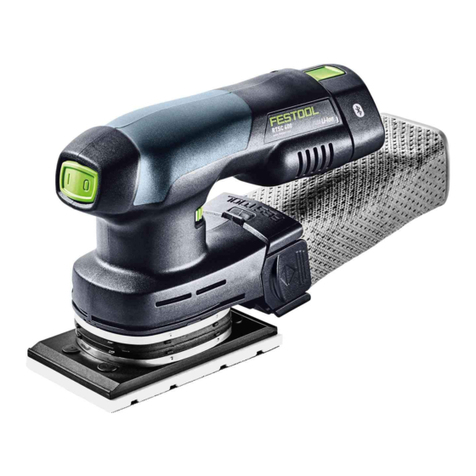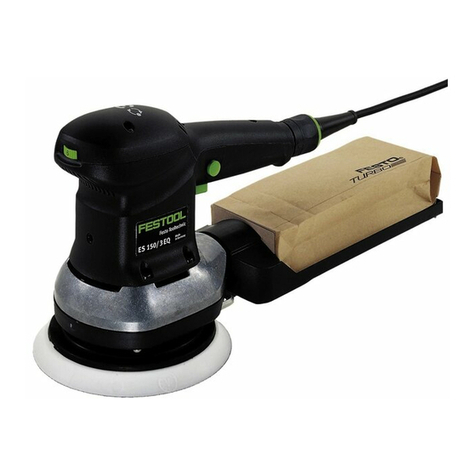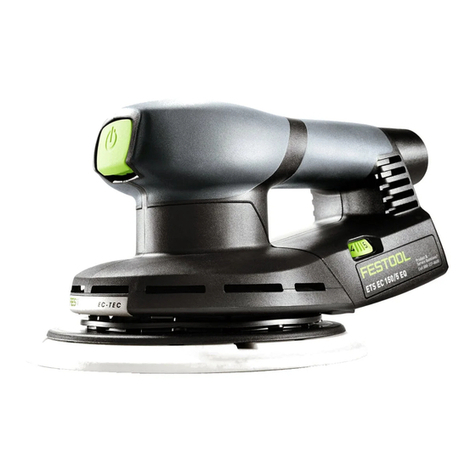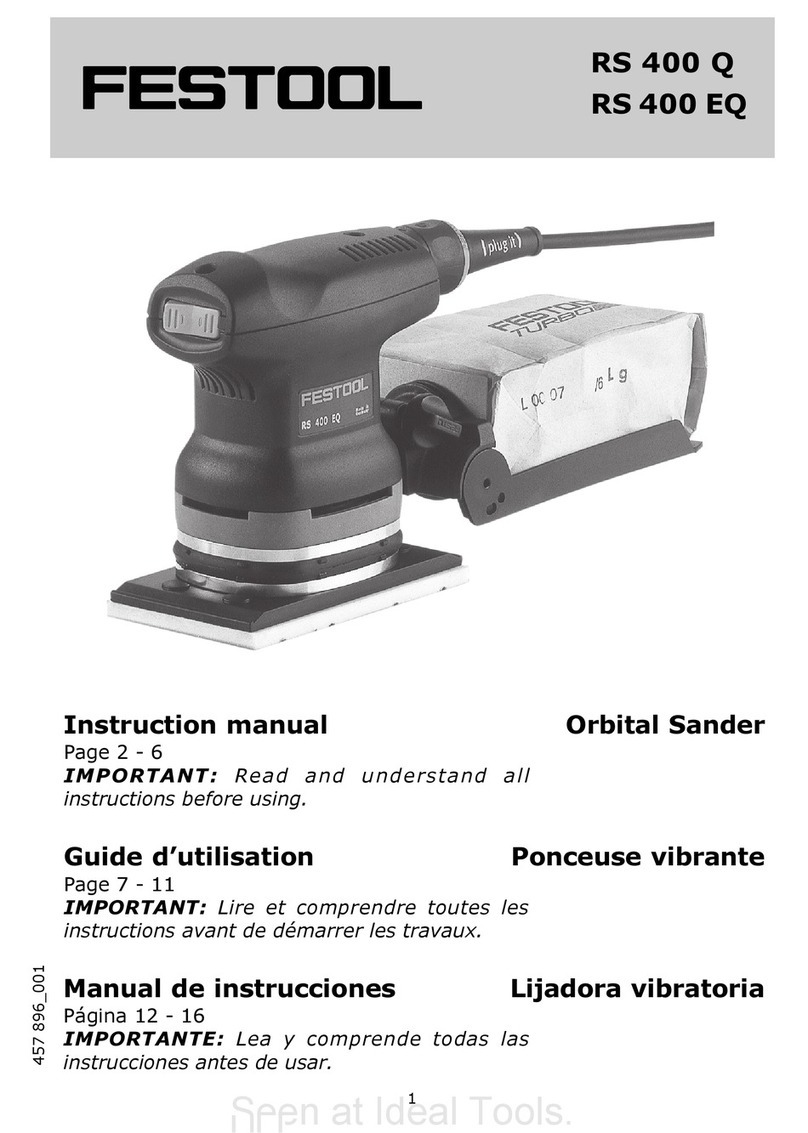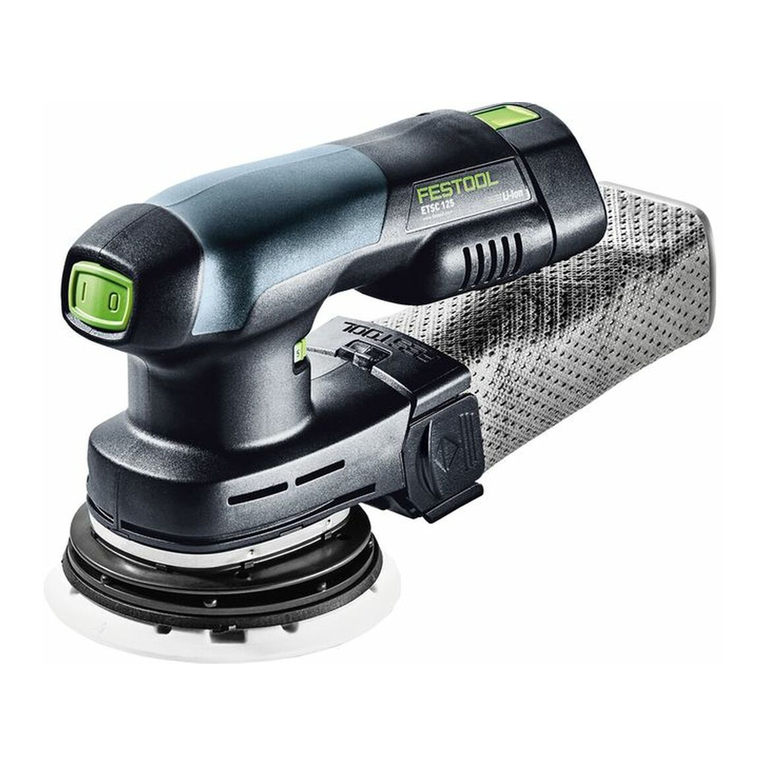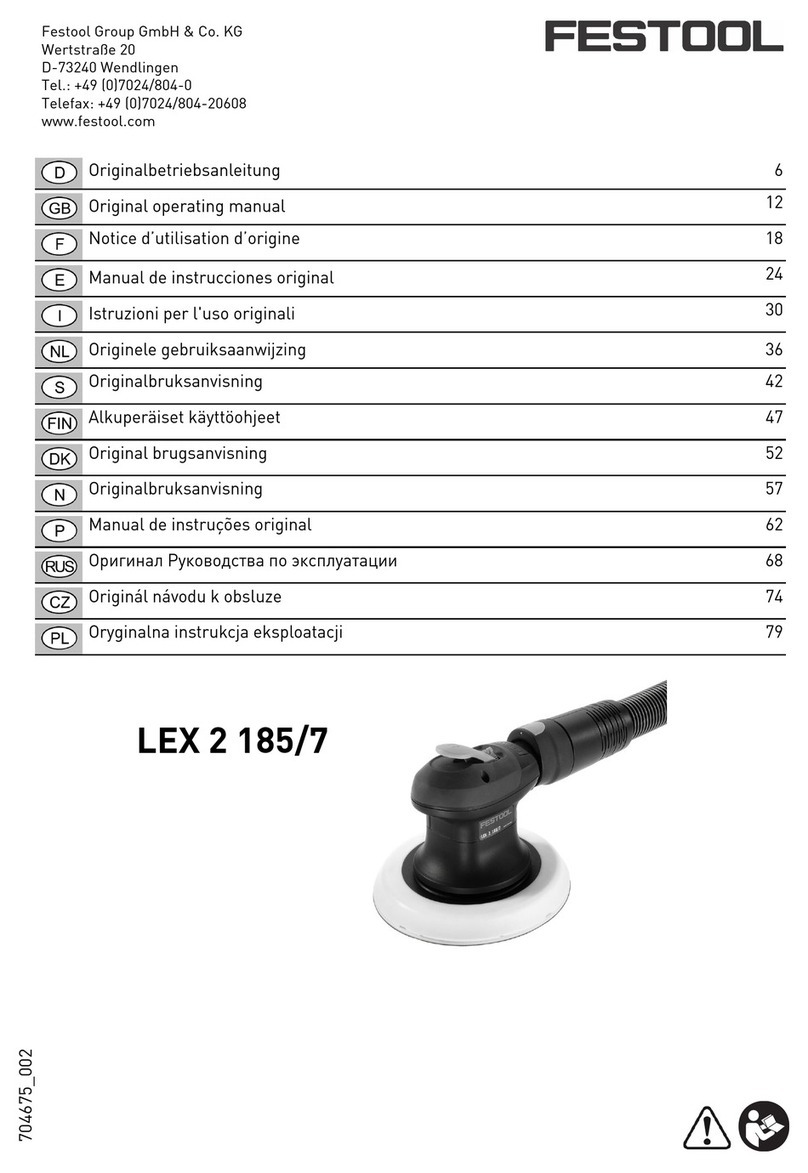
10
RAP 150 FE14/21
Original operating instructions
1 Symbols
Symbol Significance
Warning of general danger
Risk of electric shock
Read operating instructions and
safety notices!
Wear ear protection.
Wear a dust mask.
Wear protective goggles.
Do not dispose of as domestic
waste.
Tip or advice
Handling instruction
Safety class II
2 Safety instructions
2.1 General safety instructions for power
tools
WARNING Read all safety instruc-
tions, other instructions and technical data
provided with this power tool, and take a look at
the illustrations. Failure to observe the following
instructions may lead to electric shocks, fires and/
or serious injuries.
Keep all safety and other instructions in a safe
place for future reference.
The term “power tool” used in the safety instruc-
tions refers to mains-powered power tools (with
power cable) and battery-powered power tools
(without power cable).
1 OCCUPATIONAL SAFETY
a. Keep your working area clean and well-lit. Un-
tidy, unlit working areas may lead to accidents.
b. Do not operate the power tool in a potentially
explosive environment containing flammable
fluids, gases or dust. Power tools generate
sparks that may ignite dust or vapours.
c. Keep children and other persons away from
the power tool during use. If you are distracted,
you may lose control of the tool.
d. Never leave the power tool unattended. Only
leave the power tool when the insertion tool has
come to a complete halt.
2 ELECTRICAL SAFETY
a. The connector plug on the power tool must fit
in the socket. The plug must not be modified
in any way. Do not use adapter plugs together
with earthed power tools. Unmodified plugs
and compatible sockets reduce the risk of
electric shock.
b. Avoid physical contact with earthed surfaces
such as those on pipes, heaters, cookers and
refrigerators. If your body is earthed, there is
an increased risk posed by electric shock.
c. Keep power tools away from rain and mois-
ture. The ingress of water into a power tool
increases the risk of electric shock.
d. Do not use the connection cable for other pur-
poses, such as to carry or hang up the power
tool, or to pull the plug out of the socket. Keep
the connection cable away from heat, oil, sharp
edges and moving parts of the tool. Damaged
or tangled cables increase the risk of electric
shock.
e. If working with a power tool outdoors, only use
extension cables suitable for outdoor areas.
The use of an extension cable suitable for out-
door areas reduces the risk of electric shock.
f. If operation of the power tool in a damp envi-
ronment cannot be avoided, use a residual-
current circuit breaker. Using a residual-cur-
rent circuit breaker reduces the risk of electric
shock.
3 PERSONAL SAFETY
a. Be observant, pay attention to what you are
doing and proceed with care when working
with a power tool. Do not use a power tool
if you are tired or are under the influence of
drugs, alcohol or medication. One moment of
carelessness when using the power tool can
cause serious injuries.
b. Wear personal protective equipment and
always wear protective goggles. Wearing
personal protective equipment, such as a dust
mask, non-slip safety shoes, a hard hat or
hearing protection, reduces the risk of injuries
